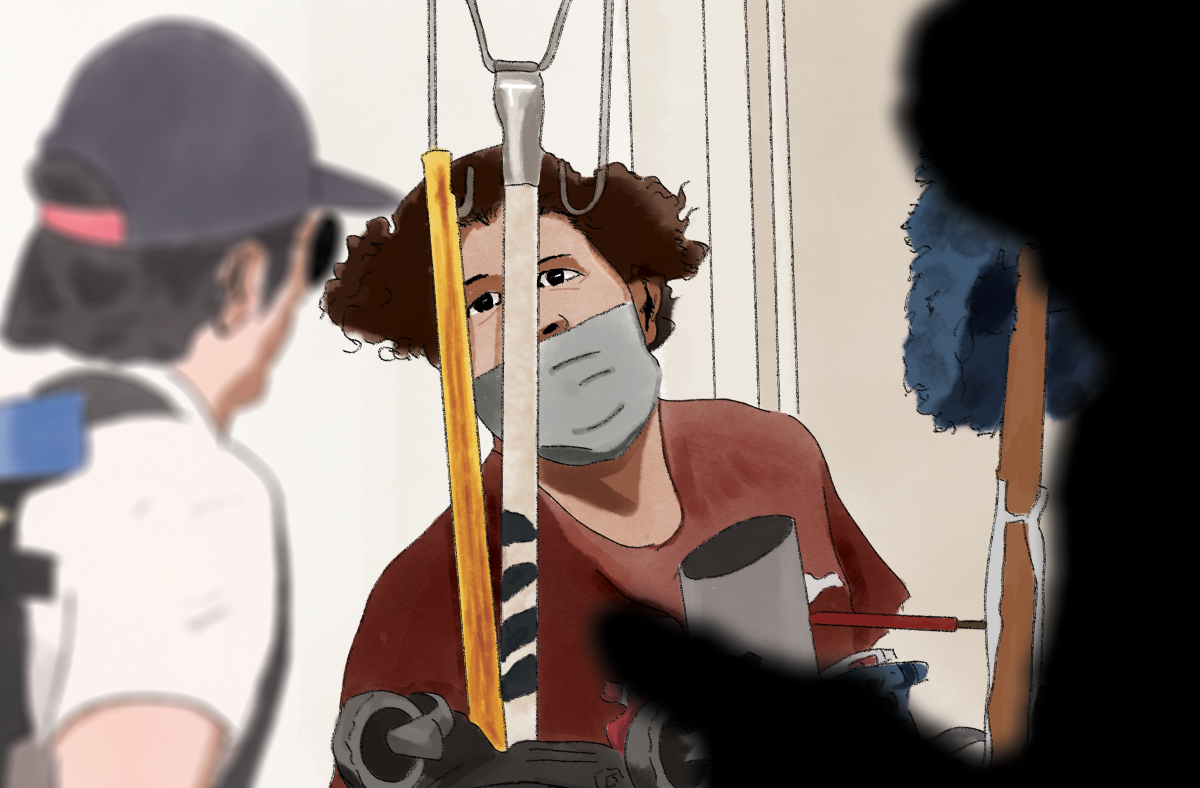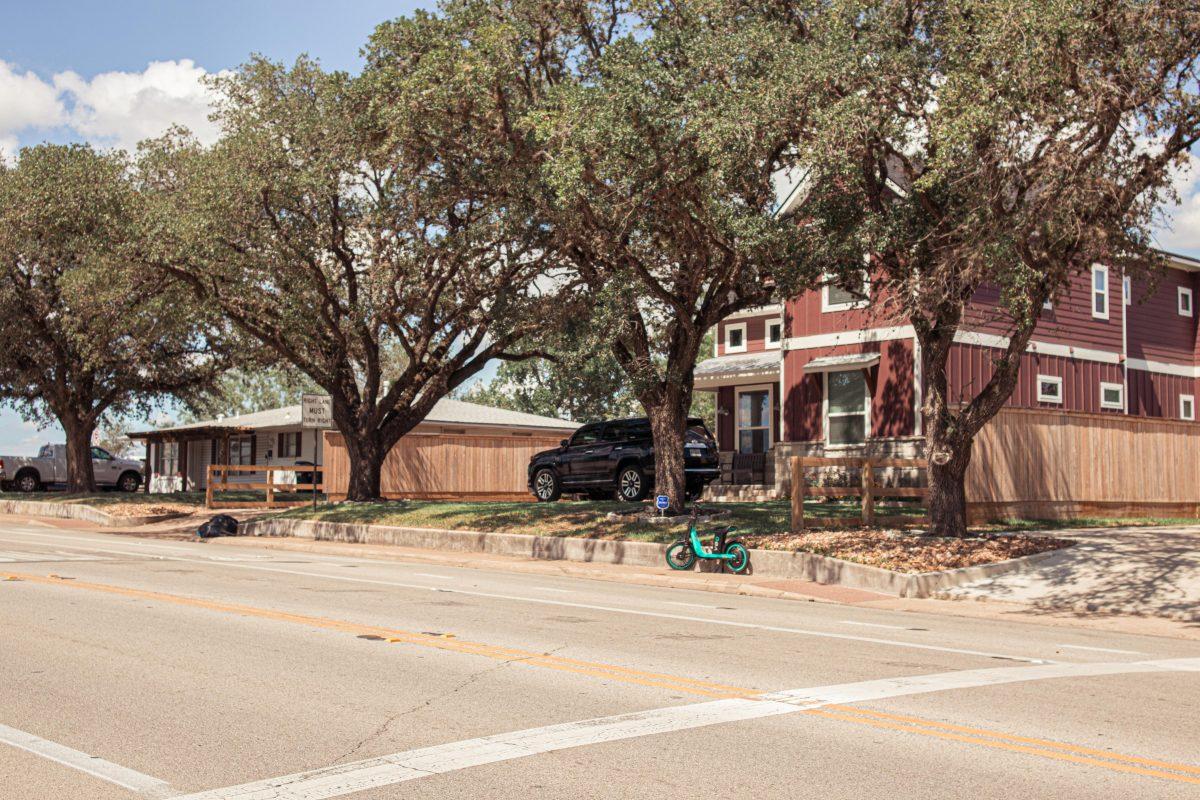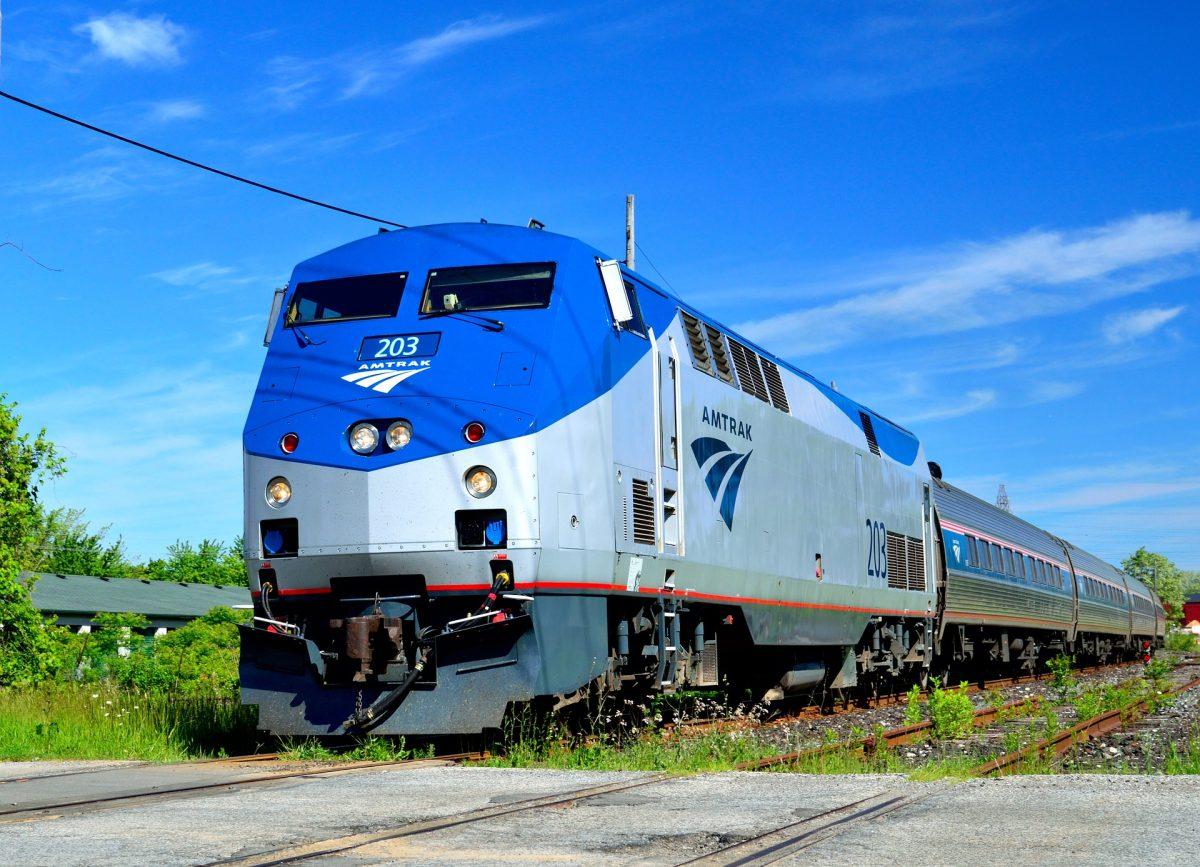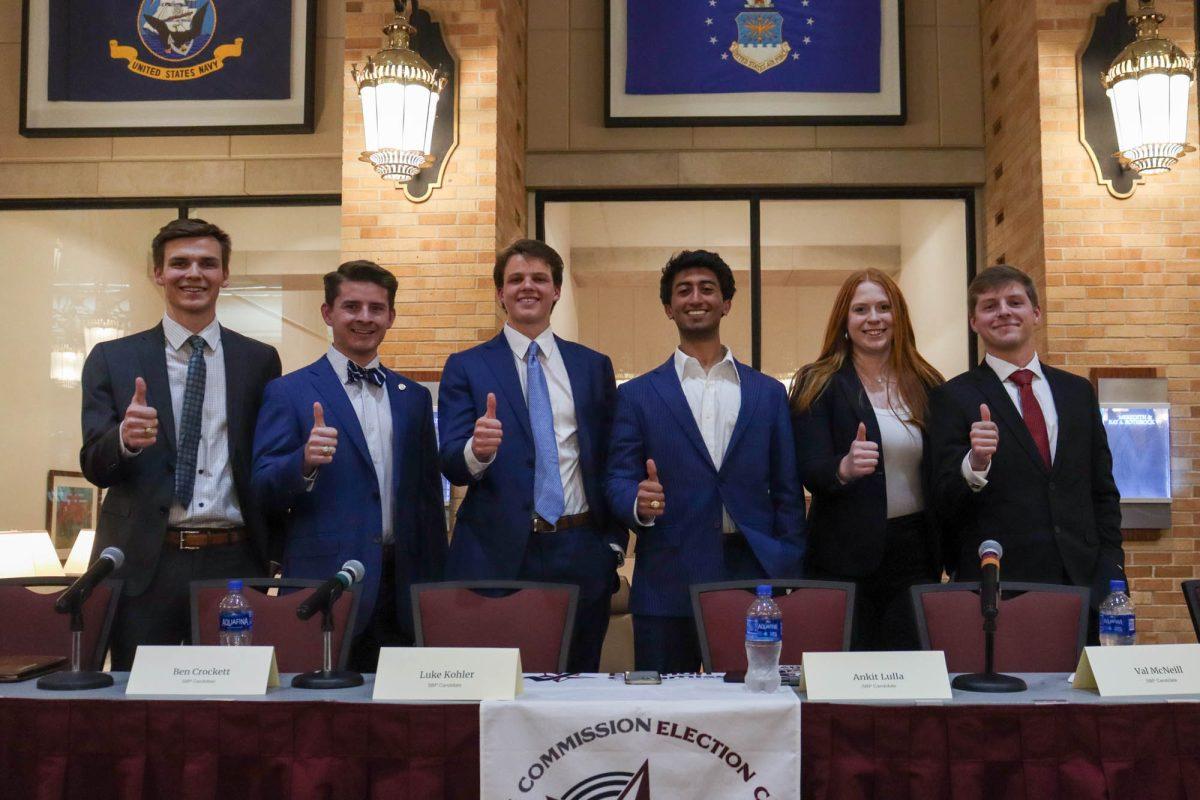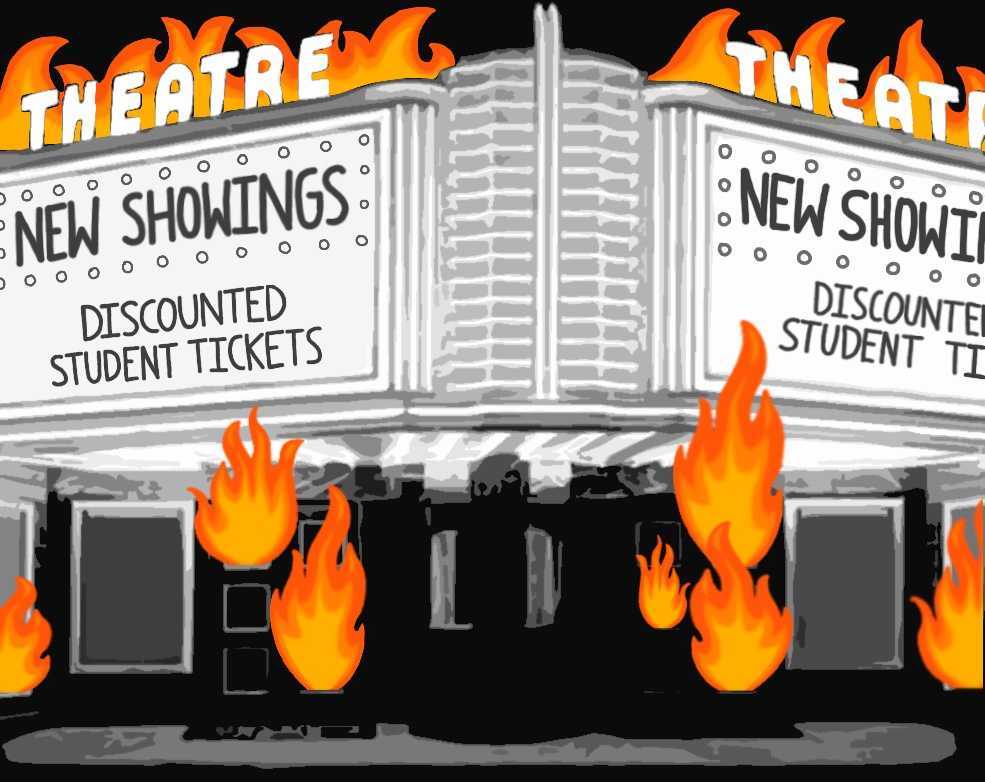Editor’s note: Nathan Varnell is a former editor for The Battalion and a former student, Class of 2023.
It’s 5:20 a.m.
Margarita Rivera rolls out of bed, cleans up and gets moving around the house. She has four children: a middle schooler, two elementary schoolers and a young baby who goes to a sitter every workday. Her kids depend on her morning routine, on getting everywhere they need to be before Rivera goes to work.
The kids go to school in Bryan, so after the struggle that every parent knows of waking the kids, preparing lunches and collecting all of their things, Rivera sets off to bounce around town on her haphazard way to work.
“That’s my little run around right there,” Rivera said at a custodial lounge on campus. “Sometimes [it’s hard to make work], we’ve got railroad tracks and trains coming on between the school and the home, trying to get them to school on time, trying to get here on time. It’s chaotic early in the morning.”
When she does arrive at work, Rivera is assigned to the Southside Commons dorms and facilities. For nearly 15 years she’s been a member of the custodial staff at Texas A&M’s campus, who are outsourced for employment via the subsidiary facilities company of Compass Group North America called Southeast Service Corporation, or SSC. SSC is in its tenth year of providing almost all groundskeeping, custodial and facility services for the College Station campus. Review and renewal of the contract — signed in 2012 between SSC and Chancellor John Sharp of the Texas A&M University System — is set for this year, according to employees. Prior to the contract, all the staff now under the Compass Group were state employees under the university.
On a given day, Rivera and her crew — one of the 25 custodial crews across campus — start by cleaning the lobby of the Commons top to bottom. Windows, detailing glass doors, taking out trash and cleaning floors are all part of the tasks necessary to keep the facilities in shape after thousands of students cross through the buildings day and night. From there, Rivera said her crew breaks up into their respective assigned areas. Often by herself, Rivera tackles Krueger Hall’s four floors, 238 rooms and everything in between.
“We do rounds, which is disinfecting everything basically, cleaning up after our students and watching over what they do,” Rivera said.
Over her typical eight-hour shifts, spent almost entirely on her feet, she said the students are the best part of her day. The Aggies treat her well as she goes room to room.
“They have their low days and you try to give them a little support, like, ‘Hang in there, you don’t want to be where I am, I want you to do more.’ It’s the same thing I tell my kids, ‘You have got to study,’” Rivera said.
Rivera’s mother passed away and she had her first child before she could attend college, so those plans “had to wait.” It’s a common theme when speaking with the essential workers around campus — life has often thrown a number of obstacles in their way to advancing themselves or providing for their families. For many, a career working on campus has been consistent and reliable, some working as many as 20, 30 or even more than 40 years for the Aggie community.
This is why members of the local nonprofit The REACH Project, which advocates for giving back to campus service workers, said they call these workers the “Essential Aggies.” The day-to-day life of campus could not function without the Essential Aggies as its backbone. However, many argue this crucial, frontline labor has long gone unrecognized and undercompensated by the university and Compass Group, to the point that a severe understaffing problem has emerged.
I. A wage shortage, not a worker shortage
Campus worker understaffing has been alleged by several employees who spoke with The Battalion during the spring 2022 semester, all from different crews and duties across campus under SSC, as well as local advocates. One employee, who will be referred to as “Mr. A” for fear of repercussions, said some custodial crews are left with only enough staff to assign one employee to entire buildings on campus for cleaning.
“You can talk to people who’ve quit, it’s money. That’s all this is. For the work we do they’re not paying them enough,” Mr. A said. “They’re overworking themselves for only a little bit of money.”
The founder of The REACH Project, Max Gerall, said SSC has begun further outsourcing work through Texas Workforce Solutions and other temporary employment agencies. The “My TX Career” portal, hosted by Texas Workforce Solutions, showed 145 open positions through Compass Group in College Station as of August 2022.
“They use [temporary] workers, and then the temp workers are coming in making more money than the regular workers,” Mr. A said. “So when they rub that in your face, that’s why they’re not keeping people. You bring in somebody in here making $15 and I’m making $13, but I’ve been here longer.”
Three employees said the lack of support from management as understaffing increases their workloads leaves them feeling unrecognized and frustrated.
“It’s just all messed up and twisted,” Mr. A said. “You got people doing three floors, four floors, and they get called off to go do ‘this’ and they forget about ‘that.’ So now they are in trouble for forgetting. And when you tell them, ‘Hey, man, you see we don’t have enough people,’ they say, ‘Oh, well, y’all need to do the best you can.’ Okay, we are.”
Another SSC worker, “Mr. C,” said despite verbal recognition of the quality of his labor, such as acknowledging the shine of a floor, the compensation doesn’t reflect it. When discussing promotions with his supervisors, he was told that he was actually too skilled to be taken off of his current duties for a promotion. The supervisors didn’t want to lose one of their best workers from that role for a raise, Mr. C said.
“I’ve been at this building for years, and I just thought that I was working toward a goal. It just doesn’t seem like that sometimes,” Mr. C said. “I got a slight raise, but it wasn’t as much as I thought it would be. But, I’ve dealt with it. Maybe they don’t see things in the same light as I do.”
Upon yearly evaluations, the companies use a “4.0” grading scale for employee performance across given areas and overall. Mr. C said even though he frequently receives 4.0s in different sections, management has told him they “don’t give out 4.0s” overall. He feels that if his employers can find an excuse to not give raises or promotions, they will.
II. Cutting costs, cutting benefits
The understaffing could be fallout from the nationwide “Great Resignation,” a trend of workers resigning from employers en masse in response to low wages and high costs of living during the pandemic. The trend was predicted and named by A&M’s Mays Business School associate professor Anthony Klotz in May 2021, according to Business Insider. Yet, the challenges facing campus workers go much deeper and are far more nuanced, employees said.
Of the workers who have seen it all at A&M, Mary Green stands out. One of six unit directors for SSC and the custodial staff, Green has worked at A&M for 40 years, 36 of those in custodial services. Green said she started out as a frontline custodian under A&M employment and “just worked her way to the top” in years since.
“My intention when I came out here in custodial was only to be here for two years,” Green said. “I think it was because I liked the people that I worked with. When you’re in a place where you’re comfortable you stay there, and I just grew, grew and grew.”
When speaking with Green in her office, tucked away in the back of the Northside custodial lounge, it’s apparent how much history she has with the campus and her crews. Adorning her desk are photos of family and children and various decorations wall to wall, many handmade in appreciation of her. One of Rivera’s own children has a photo up on Green’s shelves. Green said her favorite part of the job is — like Rivera — the students, but her fellow workers too.
“It takes all kinds to make this work, I run into different kinds of attitudes and personalities and things. It’s a challenge, but I like it,” Green said.
In years past, and particularly before COVID-19 curtailed events and programs, Green had helped organize appreciation banquets for her crews and various ways to celebrate holidays, which custodial staff often work. For Thanksgiving, Green and the seven supervisors under her took it upon themselves to cook food for over a hundred custodial staff and celebrate in Hullabaloo Hall.
“We got some good memories,” she said. “I enjoy when people [have] been here for a long time and then they get ready to retire. It’s a good thing, because they chose to stay here all those years, and the parties we get to throw for them.”
For the majority of Green’s time on campus, she was employed by A&M directly, but she was kept on as a “transition employee” when SSC took over in 2012. This was a stipulation in the 2012 “Building Maintenance Services Agreement” signed between SSC and the university. The parent company, Compass Group, owns food services contractor Chartwells, which signed a similar contract with A&M as part of the same deal. The agreement, as published by The Eagle, provided that, “Each Texas A&M building maintenance services employee as of the effective date [shall immediately be offered] a position at not less than his or her current salary, employment status (full or part-time) and seniority based on initial terms and conditions of employment that are established by SSC.”
Per the agreement, all “transition employees” like Green were to be offered the standard full-time benefits provided by SSC, but their former employer, the university, was to cover, “All accrued benefits such as vacation time, sick time over 80 hours, personal time and any other paid time off, severance and pension benefits.”
This was a major stipulation, because under Compass those benefits weren’t going to be offered at the same rate or in the same manner — and in the case of pension benefits, not at all. As state employees prior to the outsourcing to Compass, all facility and dining services staff meeting certain qualifications were entitled by law to benefits under the Teacher Retirement System of Texas, which include long-term pensions and healthcare plans among other things, according to the program’s handbook.
This may sound odd, given these staff aren’t professional educators, but the workers were employees of A&M just like faculty and administrators and thereby the state government. Recent legislation, according to The Texas Tribune, has looked to modify these long-standing retirement plans, which take up a large proportion of the state’s budget. Nonetheless, a blue-collar employee of the university was entitled to a variety of standards under the state government that are now left to the discretion of the Compass Group contractors — including certain pay scales, insurance rates and sick days.
One on-campus employee, who has chosen to remain anonymous, commented on working for the university during the transition.They will be referred to as “Mr. B.”
“A lot of other people had only 15 or 17 years [and] it wasn’t real good for them because they didn’t get to retire and stuff. They had been there a long time. And it was kind of hard for them to adjust, you know, to a different company,” Mr. B said. “It’s not the same as A&M, let me tell you, at all.”
According to a 2012 article by The Eagle, Chancellor Sharp said the overall contract between the A&M System and Compass Group would be “worth $260 million in extra revenue and cost savings over the life of the 10-year contract.”
This discussion of benefits is not to say employment under SSC and Chartwells has been without success stories. Cathy Robinson, a supervisor under Green who is currently pursuing a graduate degree in human resource management, is a prime example. She has worked for SSC for seven years.
“It’s a great company to work for. I like SSC, I actually do,” Robinson said. “I’ve learned a lot since I’ve been here, coming from different jobs and doing other things. So yes, I have a lot of knowledge now, learning how they work and how they do everything.”
But between the highs and lows, the lows have drawn attention.
III. Reaching a breaking point
In 2017, The REACH Project’s founder, Gerall, got to know some of the Essential Aggies better than many students ever do. Spending time with a Sbisa cashier named Melissa and many others after that, Gerall came to learn about a number of issues that allegedly have faced campus workers for years, including insufficient wages, food insecurity, unaffordable insurance packages, transportation hurdles and stagnant educational opportunities. In response, Gerall founded REACH to meet those needs and give back to service workers.
“He’s my angel,” Robinson said. “[Gerall], when he first started, he was pushing and pulling a wagon full of oranges and apples and water. And he stopped and asked if we wanted some refreshment and we said, ‘Sure.’ So he ended up asking me if he could come to my office and get to know some workers and you know, what we do out there and all that. So I actually brought him to my office [to meet workers], and after that, he formed The REACH Project. I joined and I’m on the [Community Advisory Board] with that.”
The first issues Gerall became aware of were with healthcare. Gerall said he and several friends conducted a study of over a hundred workers and their families from across campus and found that approximately 65% of the workforce was uninsured or to some degree “underinsured,” meaning whatever insurance the workers could afford wasn’t sufficient for their medical needs. In collaboration with the College of Pharmacy and other A&M Health entities, REACH has provided pop-up clinics and resource fairs, conducting 15-minute personal consultations where they tested workers’ hemoglobin levels, BMI, heart rate, blood pressure and provided relevant information for further treatment if necessary.
Robinson said most of the workers who don’t take the SSC or Chartwells insurance plans don’t want the extra money taken out of their paycheck. Mr. A and Mr. C shared this sentiment, saying that at lower pay some are placed in the position of choosing between an expensive benefits package and putting food on the table, or putting gas in their cars.
Workers’ needs only escalated when the pandemic began in 2020. Many employees live paycheck-to-paycheck and have many mouths to feed at home, according to Gerall, Mr. A, Mr. B and others. As layoffs and shutdowns began, REACH and student volunteers held meal distributions of pasta and other meal packs once a week, as previously reported by The Battalion.
Matters of health came to a head in 2021 at an appreciation luncheon held by volunteers from REACH, where lunch was provided by the group to custodial crews on their break.
Chemical engineering senior Logan Miertschin, the service director for supporting student organization AgsREACH, and Chief Marketing Officer Mckenzie Porter were hosting the Oct. 14 event and breaking the ice with different workers when Melvin Floyd, the crew’s lead, began appearing visibly sick.
Floyd had coordinated the event with Miertschin, and immediately upon arriving, Miertschin said he saw how sweaty and ill Floyd appeared. Upon talking, Floyd conveyed through shallow breaths that he’d contracted COVID-19 twice since the start of the pandemic, as well as pneumonia — which Floyd said he believes occurred due to wastewater exposure on the job. He told Miertschin it was especially worse that day during lunch.
“So that’s when I told him how I knew it’s hard for them to take off, but if he’s really feeling bad he should get it checked out,” Miertschin said. “I heard later that he’d gone home right after that break room meal, took off a little early … and when they got to the hospital he was basically in heart failure and had to be [flown to Houston by Life Flight].”
The problem was when Melvin and his wife Lisa Floyd arrived in Houston, the doctors refused to treat him because he didn’t have any medical insurance, according to Floyd.
“I don’t know if that was by choice because they needed to put food on the table or if it wasn’t offered to them, but he didn’t have insurance. And because of that, they couldn’t do anything for him in Houston,” Miertschin said.
The Floyds ended up taking out temporary insurance, but to add insult to injury, the policy would take 30 days to kick in. The doctors told the Floyds that Melvin would require invasive, open-heart surgery due to a heart valve leaking fluid into his lungs.
“That’s when I was like, ‘Yeah, we need to do something for him,’ because that was insane,” Miertschin said. “That’s when we started the GoFundMe.”
Within the month, the Floyds’ GoFundMe reached the goal of $30,000, as reported by The Battalion — and eventually exceeded it. Miertschin said it blew up way more than anyone expected.
“Seeing how much people cared once they heard the story was super cool. In a way, it’s what we’re trying to do with REACH in general. Obviously not such a sad story as that, that’s the extreme case. But we hope that when people hear about what’s happening with the Essential Aggies that they feel for them and want to do something about it,” Miertschin said.
Melvin ended up getting surgery in just under a month thanks to the help of students and donors, who also ensured his wife Lisa was cared for. Lisa, who had to take off work from her position on campus, received dozens of packages of food, winter gear and even holiday gifts.
“My wife needed room and board,” Melvin said. “So I just pulled it [before the surgery]. It helped a whole lot with all my bills, the insurance and medicines, her room and board, her gas, her food.”
Speaking with the Floyds in their living room, Melvin was on his feet and able to walk around, but still feeling the effects of heart failure and the surgery six months into his recovery. Chronic numbness plagues his arms and legs, which his doctors said could take over a year to return to normal. But for someone who medically died twice, Melvin’s in much better shape.
“It was crazy,” Lisa said. “He was supposed to have surgery on a Friday, and they said it’s gonna be four to six hours — it ended up being 12 hours. Then when he came out, they had him on a ventilator, they said he needed to get some rest. He stayed on the ventilator for a whole week. Then they took him off and the CO2 levels were up, so they had to put him back on there. Finally, they eased him off of there and he did pretty good, but it was a couple of days, about three or four days after that, he said he couldn’t breathe.”
Shortly after telling his wife, “Baby I can’t breathe, I can’t breathe,” Melvin passed out. His heart stopped twice as doctors and nurses worked to revive him.
“I wouldn’t wish that on nobody. It was really hard,” Lisa said.
Melvin returned to work in April 2022, around six months later.
“I went back to work because the GoFundMe is running out and we need a steady income. I tried [Social Security] disability [insurance] but that’s so slow,” Melvin said.
Supervisors started off as understanding, he said, and he’s been assigned to a lighter workload. It may be some time before he’s working on the machinery again, Melvin said. Even with the reduced work, Melvin said he walks 20 to 30 miles on any given day, starting from when he parks near the IHOP on University Drive, far from his crew area. Lisa laughed, saying it was more than she walks for her food service role at the Health Science Center, but the pace is typical for the average custodial worker.
Melvin ran out of sick days quickly when he was hospitalized. Mr. A and Mr. C spoke on the issue, drawing comparisons to employment under A&M.
“We get five sick days for the year. When it comes down to October and you don’t use your sick days, you expect them to roll over, right? They don’t,” Mr. A said. “They stay the same. And say you just saved [vacation hours] all year to use for vacation. It’ll sneak up to a certain time where you got to use them by October and if you don’t, they take them — just like that.”
But for the “transition employees” with A&M benefits they both know, some have up to 80 hours of vacation time and dozens of sick days because they do roll over.
Money is still tight for the Floyds, even with both of them back to work full-time. Having to pay for a parking pass for campus — which all SSC and Chartwells are required to do — and using Lisa’s personal vehicle for making deliveries on shift when gas was near $4 a gallon nationwide further squeezes their paychecks. The Floyds said without the support of REACH and the Aggie community, they might not have made it this far.
IV. The good old days
There was a time when working for the university helped low-income workers get ahead in life and in their careers.
Irma Ramirez is a part-time employee for Chartwells right now, working at the Memorial Student Center, or MSC, cafeteria, but she first started for A&M in the 1970s. Starting off, her story is reminiscent of Rivera’s. Ramirez didn’t finish high school due to a pregnancy, but married the father, who went into the U.S. Air Force. Needing to provide for her daughter, she applied to work on campus after moving from a Dairy Queen in Kansas.
Ramirez floated between Sbisa Dining Hall, the Commons and the MSC in her first years, before settling into a supervisor role. She started as an entry-level employee, but quickly proved herself and her work ethic in a matter of weeks.
Securing a promotion wasn’t just a matter of hard work, however.
“If I can tell you what A&M did for me,” Ramirez said. “I think I had been there a year where I went ahead and did the GED program. And it didn’t take me long. It took me like a month and a half or two, all I had to do was review and take the test, and I got it. So I’m thankful for A&M for that.”
Aiding good recommendations from her prior employers, A&M’s dining services also provided in-house training opportunities.
“Through A&M, I got training, a lot of training. They were really, really good in dining services. That’s how I advanced, with hard work too,” Ramirez said. “So I love A&M, they did a lot for me. Raised my kids, my daughter graduated in [1991], and she got the Presidential Scholarship.”
At the time of the 2012 transition to Compass Group employment, Ramirez qualified for retirement under the Teacher Retirement System, and took it. By then, her husband had left the Air Force, found solid footing working in real estate and they had become grandparents. Over 30 years of service paid off, she said.
Family matters prompted Ramirez to come back to work after 13 years in retirement, and she said her seniority and time under A&M helped her secure a fair position and pay under Chartwells, where she now works two to three days a week.
Some current employees said hearing about the advantages and support from pre-Compass employment makes them even more grateful for Gerall and REACH. Mr. A said it’s hard to talk about the issues at hand publicly due to perceived job insecurity.
“There’s a lot of stuff people don’t want to talk about because they’re scared they’re going to lose their jobs. Which you will,” Mr. A said. “[Compass will] take everything. You won’t even get unemployment. They’ll deny you. They will retaliate.”
The strain of understaffing and seeing higher-paid temp workers exacerbates this feeling, he said. Mr. B, who worked for A&M during the transition, said he sympathizes with current workers.
“The thing is for [Compass], they just want bodies,” Mr. B said. “They’re not interested in training people or advancing people to a higher level there. Sometimes the good people don’t get appreciated, the ones that work hard.”
Another employee who spoke anonymously, “Ms. D,” said she felt similarly.
“Instead of [Compass] promoting within the business, they’re reaching outside to bring people in. You have people 20 or 30 years they’ve been there but they’re bringing people in from outside instead of training up,” Ms. D said.
V. Aggies helping Aggies
Miertschin said REACH does its best to fill the gaps in infrastructure and in the lives they can. One of the Aggie Core Values is Selfless Service, and he said he hopes students can see the need for it right in the heart of Aggieland.
“Obviously, before, I knew we had essential workers and I knew we had our food service workers. But I mean, I was like most other kids on campus, right? I would say thank you and that’s about it. I basically ignored them,” Miertschin said. “[At] the financial literacy and homeownership class was the first time I had really meaningful, one-on-one relationships with some of the Essential Aggies. It was really cool seeing people’s progress and holding each family accountable that I was contacting and helping them through the class, and seeing them basically letting me into their family. They let me into their lives.”
Beyond appreciation events and the early meal distributions, Miertschin said REACH has also expanded into English Second Language, or ESL, and GED courses — as were once provided by A&M.
Neuroscience senior and Bryan-native Maray Valle is the volunteer ESL coordinator for REACH, now helping many students of the class through struggles her own family faced growing up. Challenges included translating at doctor’s appointments for parents, opening bank accounts and even trying to get deals on cars.
“Even though I didn’t grow up here in the U.S., I also experienced that environment that a ton of Hispanic kids experience, growing up having to translate for their parents and at a very young age take care of very difficult tasks that are not expected of any kid. But since their parents are not able to speak the language, they have to do it themselves,” Valle said.
The Floyds and Ramirez attested to how many of their colleagues are native Spanish speakers, with Melvin saying only four people on his entire crew weren’t Hispanic.
The REACH ESL program officially began in the summer of 2021, with the goal of returning self-autonomy to the adults of the Hispanic community, Valle said.
“We try to instead accelerate the process by providing them with the vocabulary they would need to do those types of things like doctor appointments, bank transactions, parent-teacher conferences, and I think that has been the success of it. We don’t follow a traditional curriculum, but provide them real-life scenarios,” Valle said.
The program is on its third iteration now, with 65 students. It’s grown over three-fold since the first series of classes, and now includes students from beyond campus workers. They meet twice a week for an eight-week series, with three levels of advancement from entry to more complex material. Student volunteers like Valle developed the curriculum themselves, Valle said.
“We’ve had continuous students that started with the first iteration and are still attending the classes. But for example, we have this one guy that called me and he was very excited, and he told me that he had just passed his driver’s license test because of the classes and how confident he feels with the vocabulary,” Valle said.
Through the dialogues of the courses, Valle said she hears about many of the challenges facing campus workers in and outside of the workplace. Whether long hours, a lack of transportation or — most relevant to the ESL course — an inability to communicate effectively, Valle said the work is incredibly demanding of the Essential Aggies.
Miertschin, who said he is planning on joining AmeriCorps after graduation, argued that too many student organizations focus more on holding philanthropy events for the sake of appearing charitable rather than continuously addressing needs in the community.
“It’s more about doing the event than the people they’re helping,” Miertschin said. “Even looking at a larger scale, a lot of the volunteering abroad ‘pay this much and you can volunteer’ programs are just tourism, and you can say you were helping people.”
The Essential Aggies serve students every day, and as affirmed by many like Rivera, they genuinely care about the students they meet, Miertschin said.
“It’s even more meaningful when it’s students giving back versus a bunch of people from the community because we’re the ones they wake up every morning to help,” Miertschin said. “And so when we appreciate that and show them that we appreciate that, I think it means more than if it was just members of the community that they don’t already directly serve.”
It’s not that the Essential Aggies don’t like their work, or A&M.
“I like the job,” Mr. A said. “If they gave a little more recognition, it’d be alright. And then a little bit more money. When they raise the pay each year and it’s from 20 cents to 30 cents, nah.”
Mr. A said doing the math with 25-cent raises every year, it would take 10 years — a decade — to go from an entry-level $12 an hour to $15 an hour, which economists now argue isn’t even enough for a “living wage,” according to Fortune.
“We’re the underdogs,” Mr. A said. “The students literally treat us better than our bosses.”
In separate conversations, Mr. B and Ms. D agreed, and attributed the current understaffing to the state of their employers, not the work itself.
“If they do better at their pay and treat people right they’d have people, they’d stay there longer,” Ms. D said.
Rebecca Schein, Class of 2021 and social media manager for REACH, said she urges students to connect with campus workers — whether through REACH or just in their day-to-day life.
“The custodians, I think they really appreciate it. It builds a bridge between student and employee, in a sense,” Schein said. “It’s always great to hear the stories of workers who have been here for a really, really long time, like 30 plus years or even 10 or more years. I think why they stay for so long is because they have that same Aggie Spirit — they love the school, they love the students and they love the culture of A&M. So it’s just really great to see how the Aggie Spirit can transcend just students and faculty and goes to essential workers as well.”
Following a request for comment on the concerns and allegations raised by current, former and non-employees, a Compass representative provided the following response via email:
“Like many companies, Compass has experienced impacts from the nationwide labor shortage and has expanded our recruiting tactics to include hiring temporary workers to ensure we can continue to fulfill our obligations and provide the best service to students. Throughout it all, our commitment to making Compass a great place to work has never wavered. That’s why for years, Forbes has named Compass to its Best Places to Work list, which asks employees to rate their employers on criteria like workplace safety, compensation, and advancement opportunities,” the email read.
“We take employee matters very seriously and encourage anyone who has a concern to discuss directly with their manager or supervisor. Current and former employees can also reach out to our confidential hotline 24/7 where every call is thoroughly investigated by our HR team. At Compass, we are committed to helping our employees — through scholarships, apprenticeship programs, and many other professional development opportunities — start their career journeys and continue with us for life.”
Analysis: Essentially invisible
October 19, 2022
Photo by Graphic by Cameron Johnson
Guest contributor Nathan Varnell highlights alleged understaffing and poor working conditions experienced by on-campus food workers, groundskeepers and custodial workers Texas A&M University.
0
Donate to The Battalion
Your donation will support the student journalists of Texas A&M University - College Station. Your contribution will allow us to purchase equipment and cover our annual website hosting costs.
More to Discover



